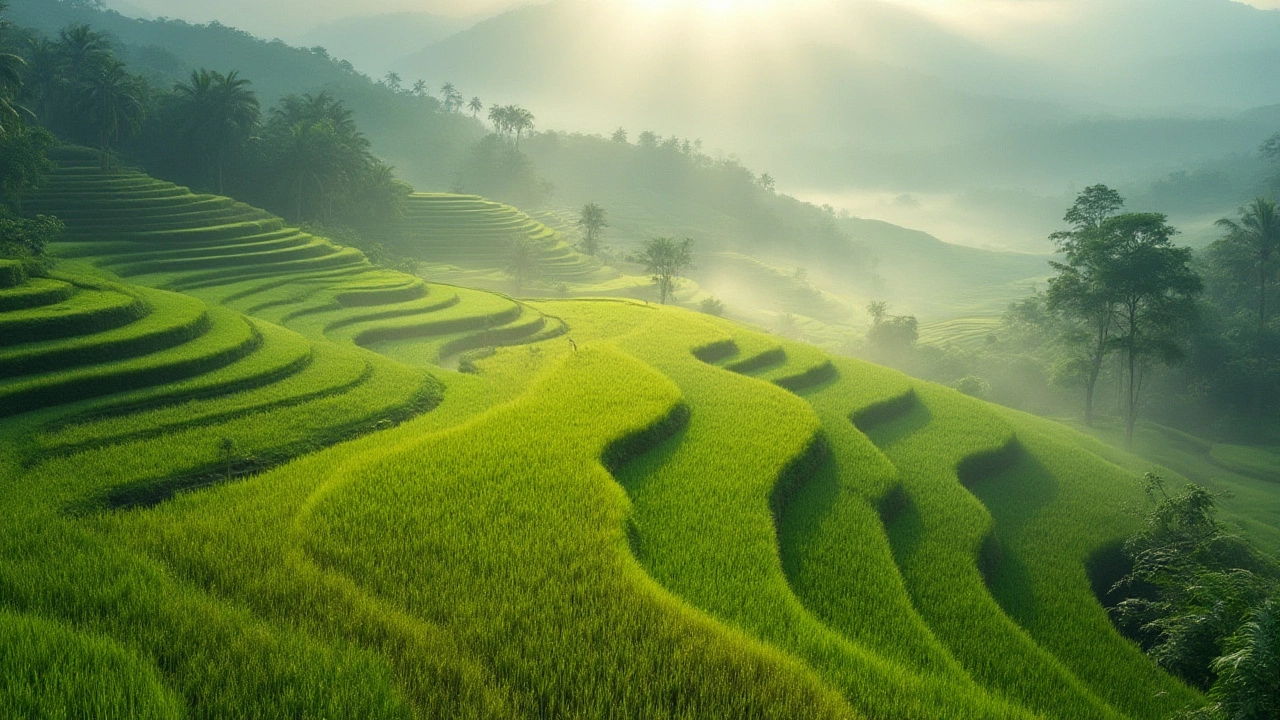Discover which landscapes give rice the best chance to thrive. Explore proven facts on topography, water management, and land tips to boost your rice harvests.
Rice Growing Conditions: What You Need to Know for Successful Harvests in India
When we talk about rice growing conditions, the specific environmental factors needed for rice to grow successfully, especially in India’s varied climates. Also known as rice cultivation requirements, it’s not just about planting seeds—it’s about matching the crop to the land, water, and season. Rice isn’t a one-size-fits-all plant. In India, where monsoons, dry spells, and extreme heat shape farming, getting these conditions right makes the difference between a full bin and a failed crop.
Rice soil requirements, the type of soil that supports healthy rice roots and nutrient uptake. Also known as paddy soil, it’s usually clay-heavy or loamy, with good water retention. You don’t need fancy soil—just something that holds water without turning to mud. If your soil drains too fast, like sandy soil in parts of Rajasthan, you’ll need to amend it or use raised beds. Farmers in West Bengal and Punjab don’t just luck into good yields; they test their soil and adjust before planting. Then there’s rice water needs, the amount and timing of water required during rice’s growth cycle. Also known as paddy irrigation, it’s not just about flooding fields. Rice needs steady moisture, especially during tillering and flowering. Too little water? Stunted plants. Too much? Root rot and disease. Smart farmers use shallow flooding, alternate wetting and drying, or even drip systems now—especially where water is scarce. And don’t forget rice climate tolerance, how rice responds to temperature, humidity, and seasonal changes. Also known as rice heat tolerance, it thrives between 20°C and 35°C. In northern India, rice is planted after the monsoon rains cool things down. In southern states like Tamil Nadu, farmers grow rice in winter when nights are cooler. Heat above 40°C during flowering can kill the grains before they form.
You’ll find posts here that dig into how to fix poor soil for rice, how to time planting with India’s rains, and what to do when water runs low. Some show how small farmers are using old tricks with new tools. Others explain why rice can’t just be replanted like some herbs—it’s an annual, and every season starts from scratch. Whether you’re growing a few rows in a backyard plot or managing a field, the right conditions don’t just boost yield—they make farming less risky and more reliable. The guides below give you the real, practical details—not theory, not fluff. Just what works on the ground in India.
